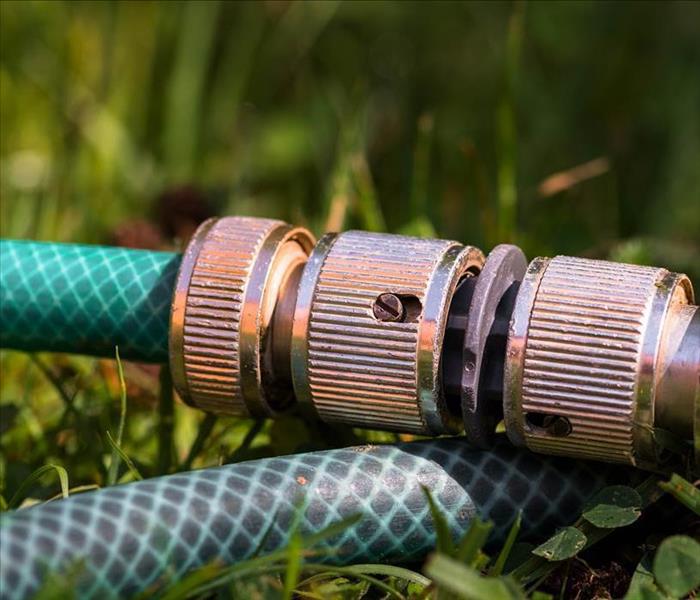How To Trace a Leak In The Ceiling With And Without Technology
3/29/2021 (Permalink)
Locate the source of a ceiling leak like the water damage pros
While the indications of a ceiling leak are typically apparent, finding the cause and making repairs is much more difficult. New ceiling leaks are obvious; the ceiling texture or drywall becomes wet, and water drips occur if the leak is severe. Sadly, the professionals at SERVPRO have found that more minor leaks will go undetected until the dampness eventually dries to a dark yellowish color, staining the ceiling finish.
Repeated leakage can damage the drywall's quality, causing texture or paint to peel and also the drywall to disintegrate from the joists. Although some overhead leaks have apparent sources, others may be difficult to pinpoint.
A leak in your property can seem minor at first, but it may result in significant secondary damage. The most important step to take when you have a water leak in your commercial property is to find the source.
4 Steps in tracing a ceiling leak
Step 1) On your roof, look for holes in roof flashings and cracks within the rubber boots of your rooftop vents. Check for shingles that are broken, raised, or have holes in them.
Step 2) The next time it rains, follow the water drip to its highest point to find the leak's source. If you don't want to wait until the next rain, you can hose down the roof as you check for where the water drips.
Step 3) For multiple-story properties with a ceiling leak, immediately check under the sink and search the cabinet underneath the above-story sink. An upper-floor bathroom may be the source of a ceiling leakage in a two-story commercial property.
Step 4) If you're unsure where the leak is coming from, wrap tissue paper all around the sink drain pipes. Then, fill the basin with water and then drain it.
The advanced method in locating the source of a ceiling leak
The timing of the leak is a good predictor of its source. Leaks that arise continuously indicate that the leak originates from inside the property. Leaks that only occur when it rains are an indicator of a roofing or exterior issue.
First, look for the most common signs:
- Wet drywall.
- Dark stains on the ceiling.
- Mold growth.
- Peeling paint.
A professional water restoration company will perform a thorough inspection of your property using advanced technology like moisture meters and infrared cameras to locate the source of a leak. In most cases, a simple visual inspection will not reveal the source of the leak.
Professional water leak inspection includes:
- Check for water loss on the roof's underside.
- Inspect the pipes for corrosion or damage.
- Inspection of wet drywall.
- Inspection of mold damage.
Avoid mold from a ceiling leak
Be mindful that mold growth can start in the first 24-48 hours after a leak occurs. When left untreated, mold will quickly spread and cause structural damage.
To avoid mold damage:
- Dry the damaged area immediately.
- Remove all wet insulation.
- Throw away anything unsalvageable.
- Call SERVPRO for professional help!
Professional ceiling leak mitigation and restoration
No water damage is the best sort of water damage. In the industry, SERVPRO of South Cobb is a renowned company, and it has been serving customers in greater Atlanta since 1967. If you want your everyday life to be normal again after you have suffered damage from leaks in your ceilings, then the IICRC professionals at SERVPRO are the most reliable option for you.
Our team is fully equipped and has the experience you are looking for ceiling damage repairs and restoring water damage. Contact us today; We offer 24/7 emergency services to our customers.

 24/7 Emergency Service
24/7 Emergency Service
